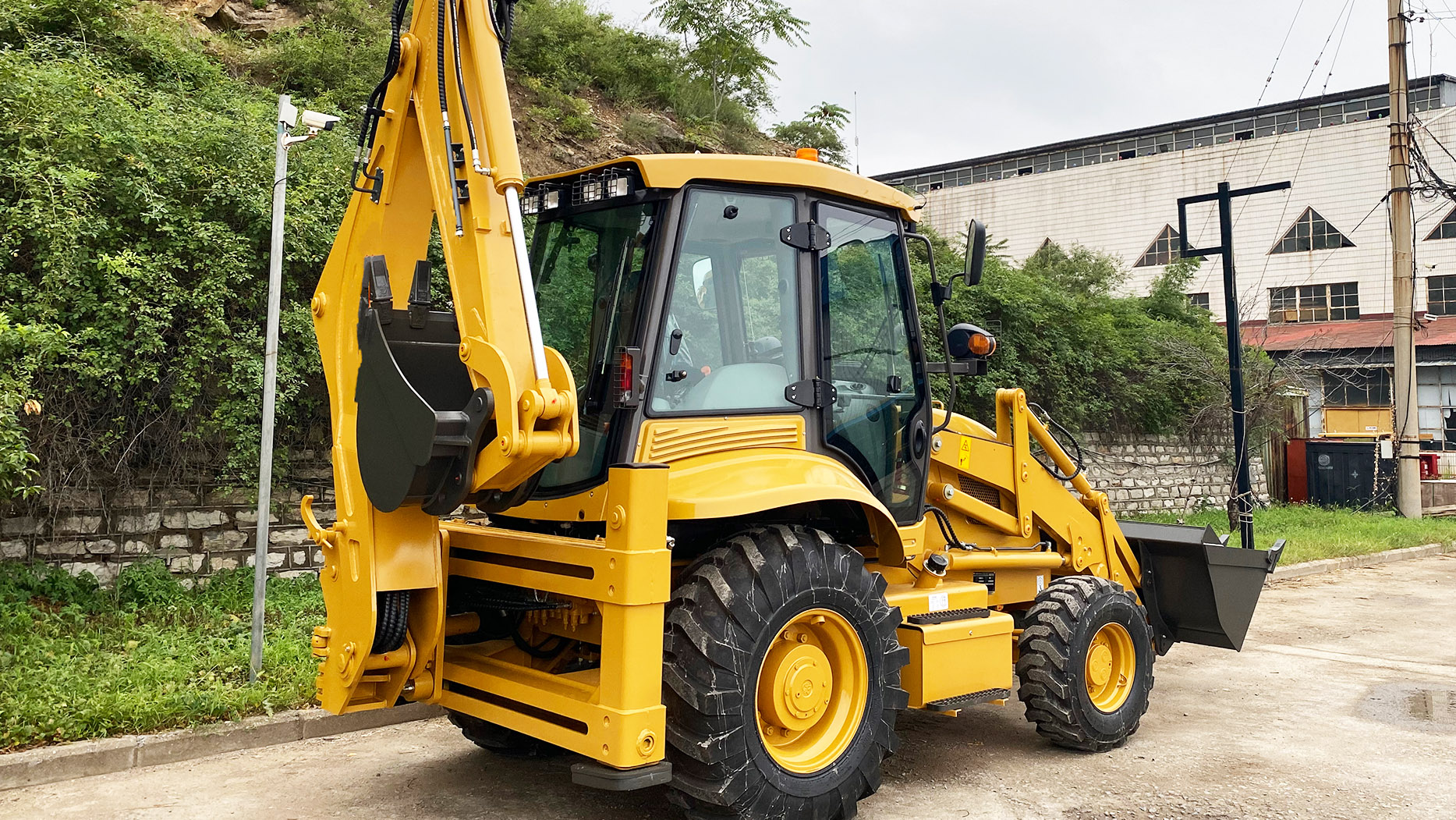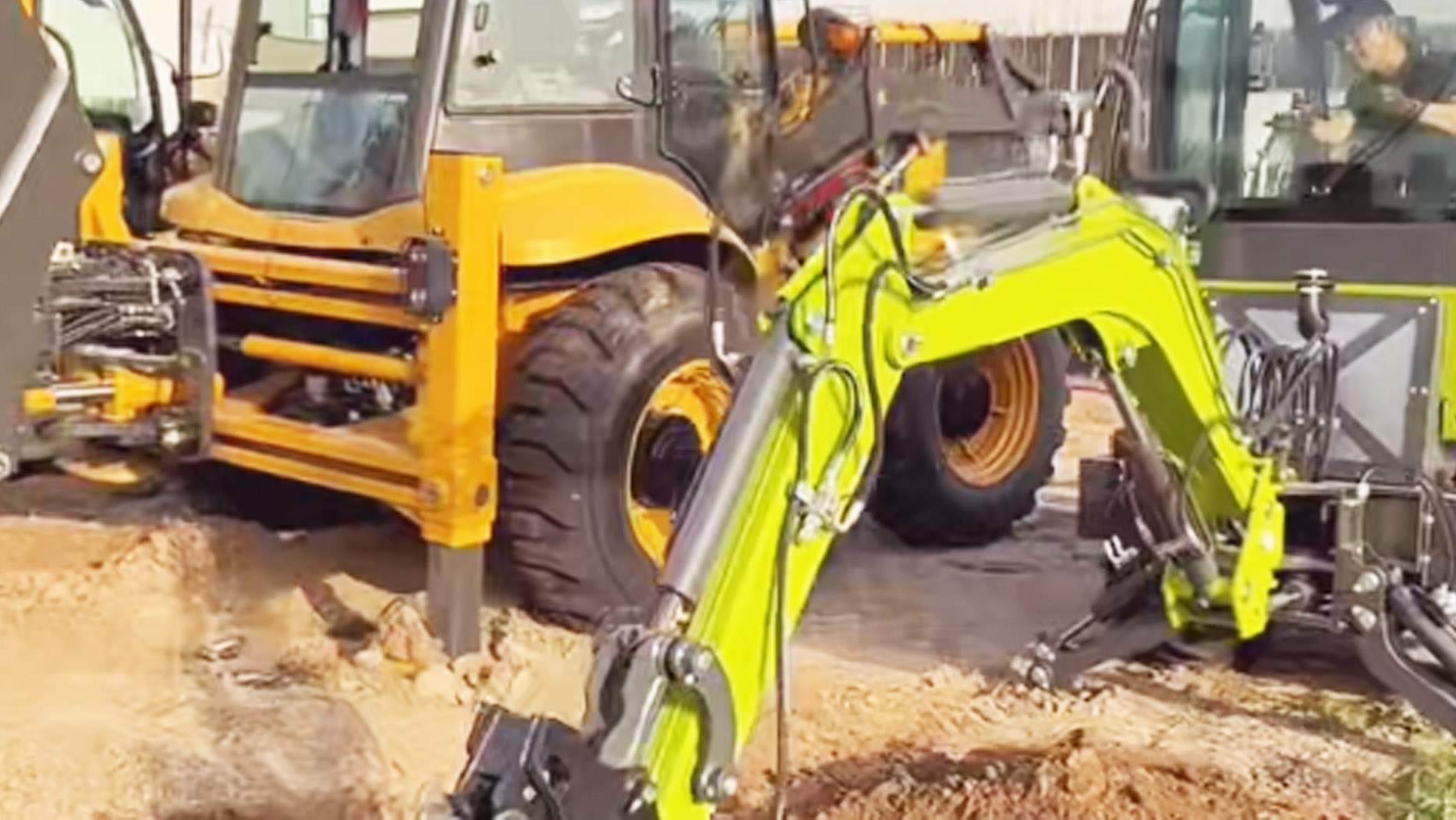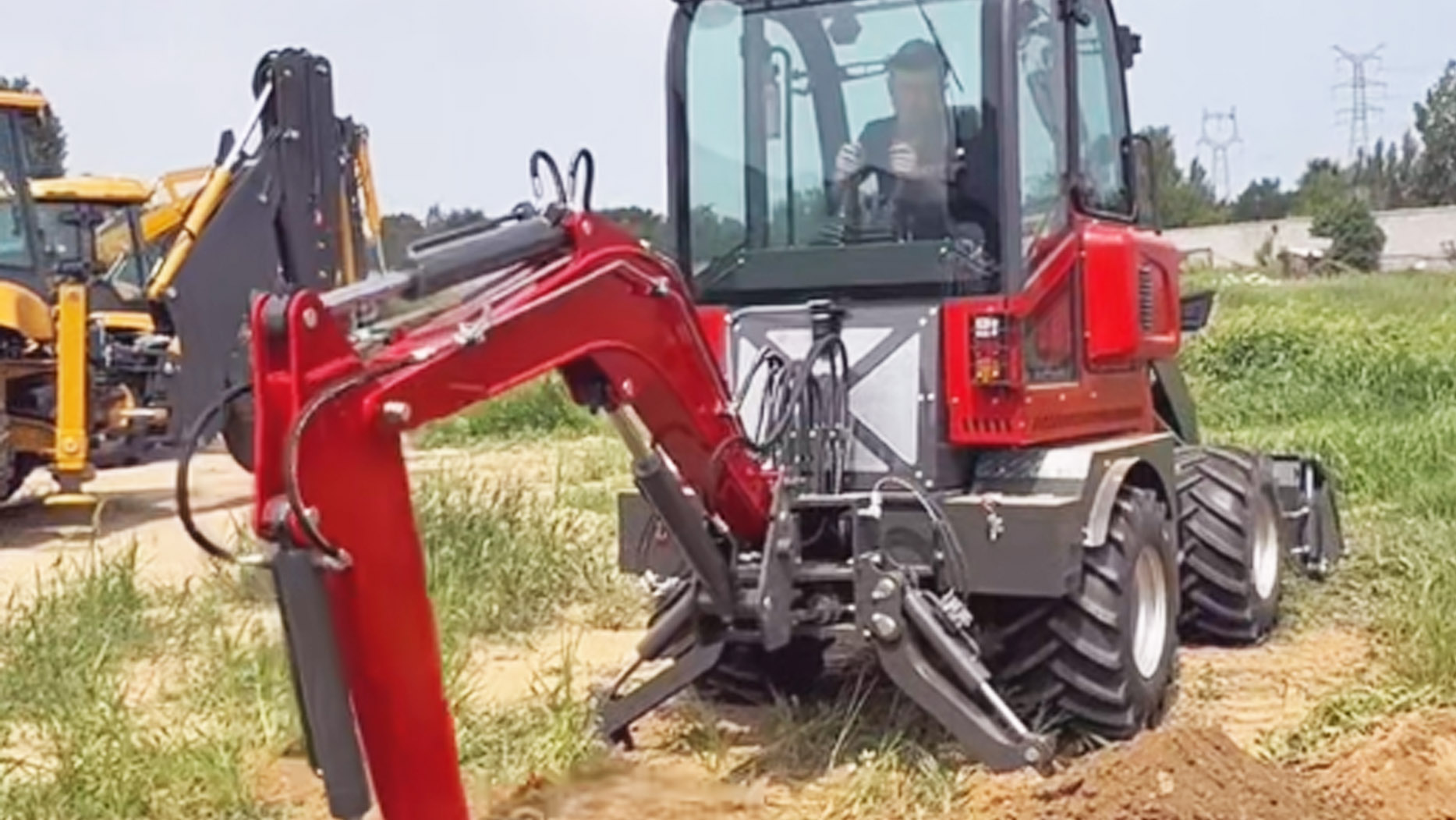The backhoe loader is a cornerstone of many construction, landscaping, utility, and agricultural operations. Combining the versatility of a loader at the front with the digging capability of an excavator at the rear, it's a powerhouse of productivity. However, with its dual functions, articulated movements, and significant weight, operating a backhoe loader demands a high level of skill, awareness, and an unwavering commitment to safety. Neglecting safety protocols can lead to serious accidents, injuries, equipment damage, and costly downtime.
Ensuring the safe operation of a backhoe loader is not merely a regulatory requirement; it's fundamental to protecting personnel, equipment, and the project itself. This guide will outline the essential practices and considerations for safely operating a backhoe loader, whether it's a compact model or a larger machine from brands like MYZG or ZGLOADER.
1. Comprehensive Training and Certification
The absolute first step to safe backhoe operation is proper training.
Formal Training Programs: Operators must undergo formal training that covers machine specifics, operational theory, safety regulations (e.g., OSHA standards in the US), and practical, hands-on experience. This should be provided by certified instructors.
Certification: Many regions and job sites require operators to be certified to demonstrate their competency. Never allow an untrained or uncertified individual to operate a backhoe loader.
Manufacturer-Specific Training: Familiarize yourself with the specific model you're operating. Each manufacturer, including MYZG and ZGLOADER, will have unique features, controls, and safety guidelines outlined in their operator's manual. Read it thoroughly.
Refresher Training: Even experienced operators benefit from periodic refresher courses to stay updated on best practices, new technologies, and evolving safety standards.

2. Pre-Operation Inspection (Walk-Around Check)
Before starting the engine, a thorough walk-around inspection is non-negotiable. This prevents unexpected failures and identifies potential hazards.
Machine Condition:
Fluid Levels: Check engine oil, hydraulic fluid, coolant, and brake fluid. Ensure they are at proper levels and look for any leaks.
Tires: Inspect for proper inflation, cuts, bulges, or excessive wear. Check lug nuts for tightness.
Hoses and Cylinders: Look for cracks, leaks, or damage on all hydraulic hoses and cylinders (for both loader and backhoe ends).
Pins and Bushings: Check all pivot points, pins, and bushings for wear, damage, or missing retaining clips. Ensure all are properly greased.
Lights and Alarms: Verify all lights (headlights, brake lights, warning beacons), horn, and backup alarm are clean and operational.
ROPS/FOPS: Inspect the Roll-Over Protective Structure (ROPS) and Falling Object Protective Structure (FOPS) for any damage.
Bucket and Attachments: Check for cracks, excessive wear, or damage to cutting edges, teeth, and quick-attach mechanisms. Ensure attachments are securely mounted.
Outriggers/Stabilizers: Inspect condition and ensure they deploy and retract smoothly.
Leaks: Look for any signs of fluid leaks on the ground under the machine.
Work Area Inspection:
Overhead Hazards: Identify power lines, low-hanging structures, or tree branches that the boom or loader arm could contact.
Underground Utilities: Locate and mark all underground utilities (gas lines, water pipes, electrical cables, communication lines) before digging. "Call Before You Dig" is paramount.
Ground Conditions: Assess the stability of the ground. Look for soft spots, slopes, trenches, or unstable edges that could compromise stability.
Obstructions: Clear the work area of any debris, rocks, tools, or personnel.
Traffic Flow: Plan traffic routes for other vehicles (e.g., dump trucks) and personnel around the backhoe's operating zone.
 3. Safe Entry and Exit
3. Safe Entry and Exit
Always follow the "three points of contact" rule when entering or exiting the cab.
Three Points of Contact: Maintain two hands and one foot, or one hand and two feet, on the machine at all times when climbing up or down.
Face the Machine: Always face the machine when mounting or dismounting.
Use Handholds and Steps: Utilize designated steps, handrails, and grab irons.
Never Jump: Jumping from the machine can lead to serious injuries.
Clear Steps: Ensure steps and handholds are free of mud, grease, or debris.
4. Proper Start-Up Procedures
Seatbelt: Always fasten your seatbelt before starting the engine.
Neutral/Park: Ensure the transmission is in neutral or park, and the parking brake is engaged.
Controls Locked: Verify all hydraulic controls are in the neutral or locked position to prevent unintended movement.
Clear Area: Give a quick honk of the horn and visually confirm the area around the machine is clear of personnel before starting.
5. Safe Operation Techniques
This is where skilled operation meets safety, ensuring the machine performs optimally without incident.
Maintain Stable Base:
Outriggers: Always deploy the outriggers/stabilizers before operating the backhoe (digger) end. Ensure they are firmly planted on stable ground. If the ground is soft, use mats or timber cribbing under the pads.
Loader Bucket as Counterweight: When digging with the backhoe, position the loader bucket on the ground, slightly off-center from the machine's centerline. This provides additional stability and acts as a pivot point.
Level Ground: Whenever possible, operate on level ground. If operating on a slope, dig on the uphill side with the machine pointed downhill for better stability, and always follow manufacturer guidelines for maximum permissible slope.
Maintain Awareness of Surroundings (Situational Awareness):
360-Degree Check: Constantly scan your work area. Be aware of personnel, other equipment, structures, and utility lines.
Blind Spots: Be mindful of blind spots. Use mirrors, backup cameras, and spotters when necessary, especially when reversing.
Swing Radius: Keep the backhoe's swing radius clear of personnel, vehicles, and obstructions. The swing area should be marked and access restricted.
Proper Digging and Loading Techniques:
Digging: Dig with smooth, controlled movements. Avoid sudden jerks or over-extension of the boom. Do not undercut the machine's own stability.
Loading: Load dump trucks evenly. Avoid swinging heavy loads over the cab of the truck or over personnel. Maintain a safe distance from the truck.
Spoil Piles: Place spoil piles in designated areas that won't impede traffic, obstruct visibility, or collapse into the trench.
Travel Safety:
Carry Low: When traveling, keep the loader bucket and backhoe boom in a low carry position (approximately 12-18 inches off the ground). This lowers the center of gravity, improving stability.
Travel Speed: Adjust travel speed to suit terrain, load, and visibility. Go slower over rough or uneven ground.
On Slopes: When traveling up or down slopes, position the heaviest end (usually the backhoe) uphill for better stability.
Road Travel: If traveling on public roads, ensure the backhoe is properly equipped with lights, reflective markings, and a Slow-Moving Vehicle (SMV) sign. Follow all traffic laws.
Avoid Overloading: Never exceed the backhoe's rated lift capacities for either the loader or the backhoe end. Overloading severely compromises stability and can lead to tip-overs or structural damage.
Attachments: When using attachments, ensure they are compatible with the backhoe loader's hydraulics and lift capacity. Always follow the manufacturer's guidelines for attachment installation and operation. Brands like MYZG and ZGLOADER offer a range of compatible attachments, but proper pairing and use are crucial.
Avoid Trench Collapse: When digging trenches, be aware of soil conditions. If digging deep, ensure proper shoring or sloping is in place to prevent trench collapse before anyone enters. Never operate the backhoe too close to the edge of an unsupported trench.
 6. Shutdown Procedures
6. Shutdown Procedures
Safe shutdown is just as important as safe start-up.
Park on Level Ground: Whenever possible, park the backhoe loader on firm, level ground.
Lower Attachments: Fully lower the loader bucket and backhoe boom to the ground.
Retract Outriggers: Fully retract the outriggers/stabilizers.
Engage Parking Brake: Engage the parking brake.
Neutral Controls: Place all hydraulic controls in neutral or the locked position.
Turn Off Engine: Turn off the engine.
Remove Key: Always remove the key to prevent unauthorized operation.
Secure Machine: If parking on a slope, chock the wheels. If leaving for an extended period, secure the machine against vandalism or theft.
7. Environmental and Site-Specific Considerations
Weather Conditions: Be extra cautious in adverse weather (rain, snow, ice, high winds). Reduced visibility and slippery conditions increase risk.
Night Operations: Ensure adequate lighting for the work area and on the machine itself.
Work Zones: Clearly define and barricade the backhoe loader's operating zone, especially the swing radius, to keep unauthorized personnel out.
Communication: Maintain clear communication with other workers on site, especially when working in proximity to others or when obscured by blind spots.
Conclusion
Operating a backhoe loader is a complex task that demands rigorous adherence to safety protocols. From comprehensive training and daily pre-operation inspections to skilled operation techniques and proper shutdown procedures, every step contributes to a safer work environment. Understanding the machine's capabilities and limitations, maintaining constant situational awareness, and prioritizing stability are paramount. For operators of machines from reputable manufacturers like MYZG and ZGLOADER, following these safety guidelines will not only extend the life of the equipment but, most importantly, protect lives and prevent accidents on the job site, ensuring that the backhoe loader remains a productive and safe asset for years to come.
Post time:Aug.04.2025
